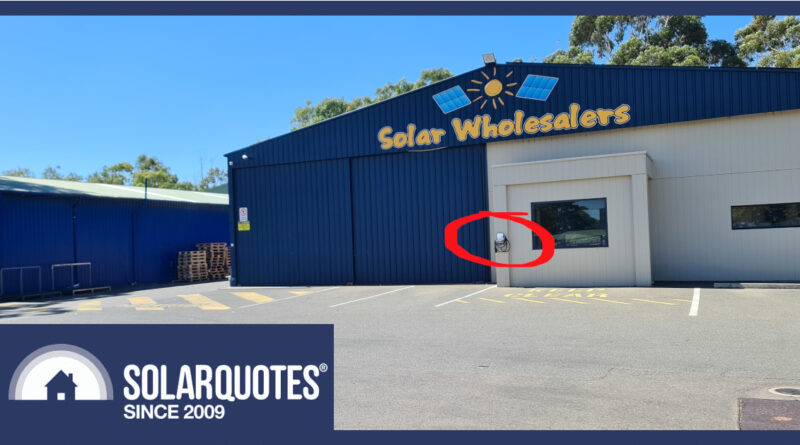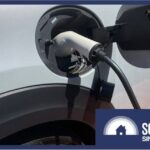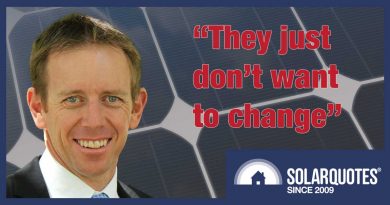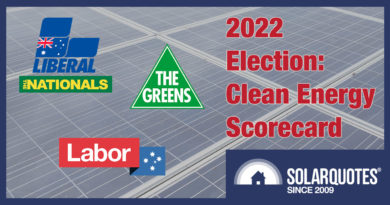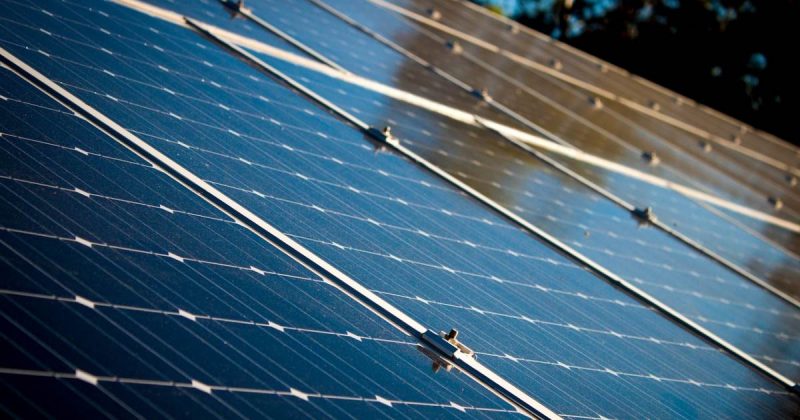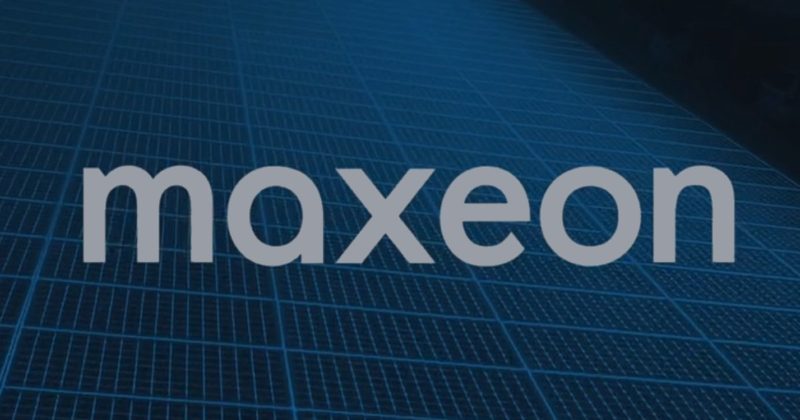Thinking Of Installing EV Chargers At Work? Read This First
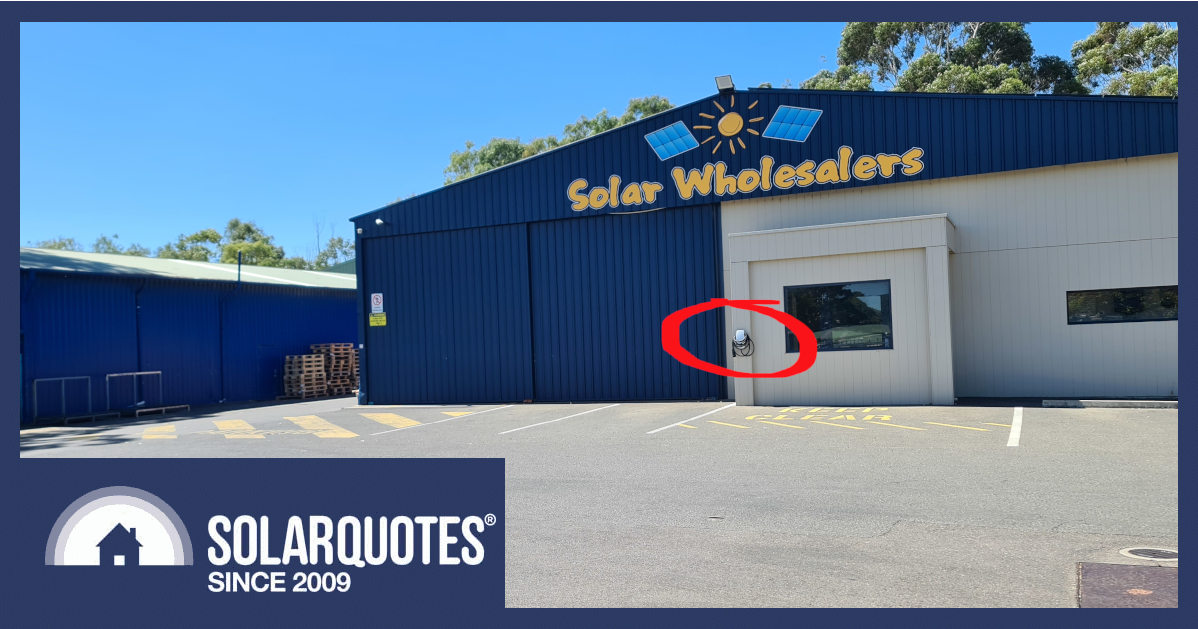
Say Hello to the Future of Workplace Amenities – The EV Charger
Imagine a world where arriving home from work includes a fully charged electric car, and the humdrum petrol station detour becomes a thing of the past. Sound far-fetched? Well, not if your workplace is visionary enough to install EV chargers.
Forget about a fuel card or a Christmas party; it’ll be the cheapest company morale you’ll ever buy, especially when charged from your commercial solar system or just cheap daytime grid electricity. Heck, if you line your ducks up, the grid will often pay your company to charge your employees’ cars as daytime electricity prices increasingly go negative.
I know; it sounds like a scene from a sci-fi novel. But trust me, with a progressive approach and a little planning, you can make this future a reality. Let’s delve into EV charging at work.
Why You’ll Be Boss of the Month for Installing EV Chargers
Installing EV chargers at your workplace is a win-win situation. Not only will your employees and customers (especially those cashed-up ones cruising around in their electric cars) thank you for it, but it’s also a great way to chip in for the greater good. 1.
The Importance of Daytime EV Charging
I have sat through a lot of conferences & webinars recently and listened to a lot of clever people, and I can’t stress this point enough;
It’s essential that we get folks to charge their EVs during the day.
This is all part of the big picture for Australia’s energy goals. You might’ve heard of the ‘duck curve’ – well, smoothing that out is vital for our power networks, reducing carbon intensity, and making our economy more stable. Sunny Australia doesn’t need Saudi Arabia, if we just focus on storing the energy available to us instead of importing fossils from extremist theocracies.
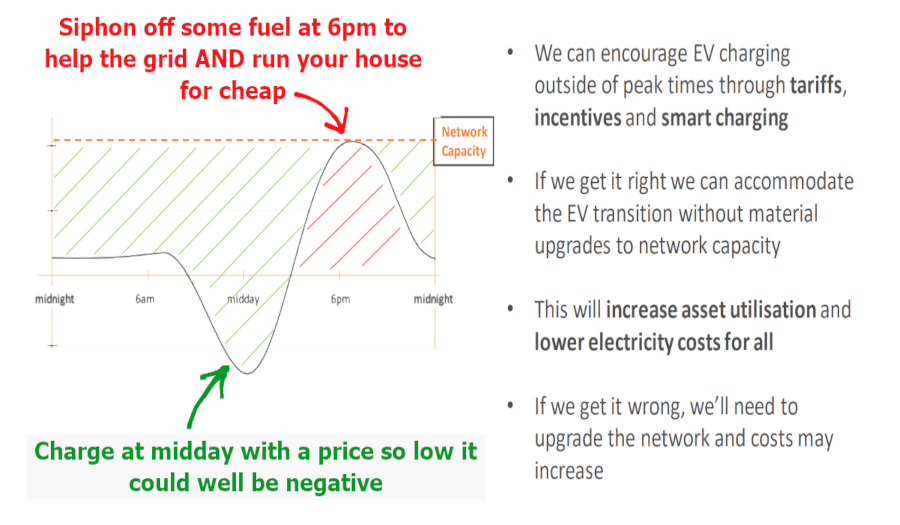
SA Power Networks (SAPN) are already planning what the network needs.
Encouraging daytime EV charging is like hitching a ride on a wave of cheap solar energy flooding the grid. It’s a smart move, and it means we’re making the most of the huge battery storage capacity sitting in our rapidly growing fleet of electric cars across Australia.
It bolsters the stability of our power networks during minimum demand events and, as Vehicle To Home rolls out, is set to provide increasing support when our infrastructure is under strain due to the evening peak. Your employees can tootle home and siphon off some ‘fuel’ to cook tea, run the TV and keep the fridge cold.
How Many EV Chargers Does My Workplace Need?
I would recommend that whatever plan is hatched, it should anticipate that every car parking space will one day need a charger. If you have to dig up the asphalt, make sure there are spare conduits and drawstrings to add more capacity easily. Not just more copper for the chargers themselves, but data cables for connectivity too.
What’s The Difference Between Level 1, Level 2, and Level 3 DC Fast Charging Stations?
Level 1 is a trickle charger plugged into an ordinary power point. It will charge at just over 2 kW, so an 8-hour day will put about 16 kWh into an EV. That’s all of Irene the iMiev’s battery, half of a Mini Cooper’s and about a quarter of a Tesla Model Y’s battery.
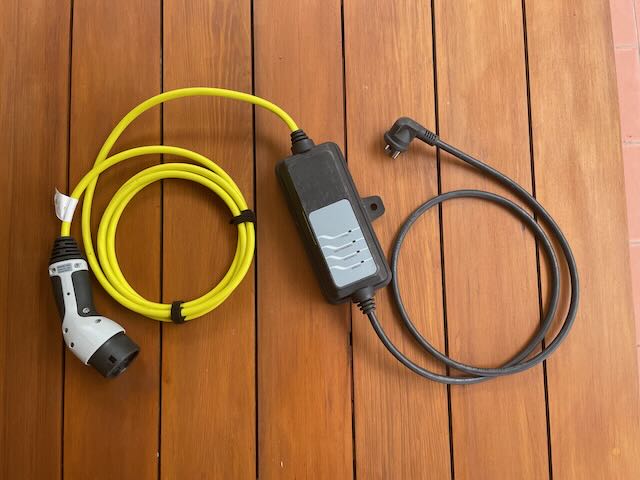
If your employees are happy trickle charging – you just need to provide a standard 10A socket for them to plug their ‘Level 1’ mobile connector into.
Level 2 is a hard-wired AC connection that will charge at 7kW (32A) on a single-phase supply and up to 22kW on a 3-phase supply (32A per phase) – although most cars on sale in Australia max out at 11 kW (16A per phase) from 3-phase Level 2 chargers.
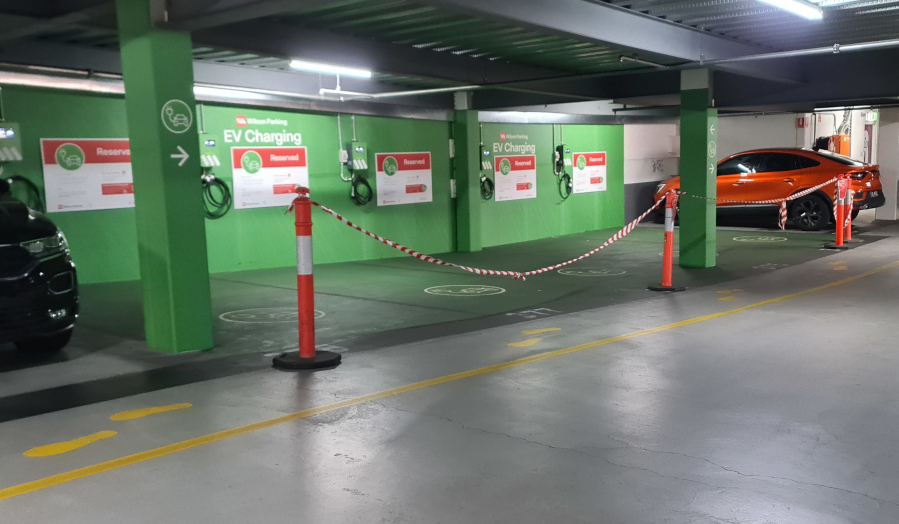
Wall-mounted Level 2 EV chargers are almost 4x faster than Level 1 and look more professional than powerbricks sitting on the floor.
Level 3 can shoot high-voltage DC directly into the battery at speeds from 50kW to well over 100kW. These are much more expensive to install, often requiring large infrastructure works, and sometimes attracting crippling ‘demand charges’ from your electricity retailer because they are so peaky.
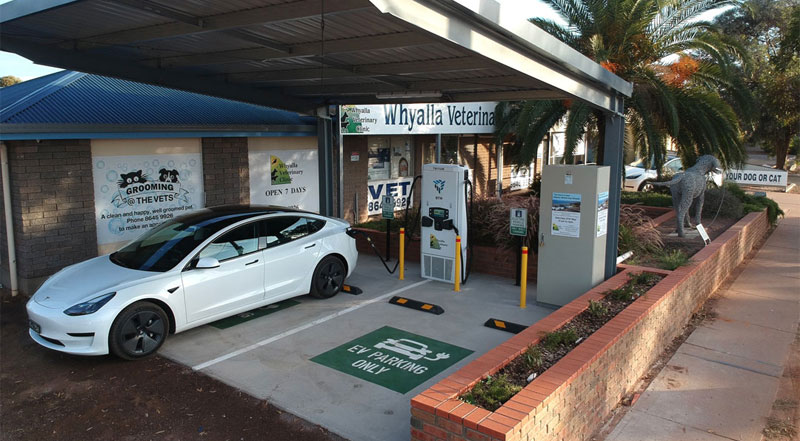
A Level 3, DC fast charger, installed at Whyalla Veterinary Clinic
What Charging Speed Suits My Workplace?
Seeing as you’re at work for 8 hours a day 2 you’re not likely to need fast charging. A standard power point and a “granny charger” might be just what the accountant ordered. I would still insist that if you have to install infrastructure, it might as well be future-proofed with enough conduit/cable/data to handle a “proper” charger later. The labour costs will be similar, whether it’s a standard general-purpose outlet or a 3-phase 32A one.
Using the EVSE supplied by the factory will save $1000 on a wall-mounted unit. It’ll charge 100km in a Tesla Model 3, and let’s be honest; it’s a waste of your life if you commute that far daily.
On the other hand, Level 2 chargers look more professional and are the only way to get built-in smarts for off-peak/solar charging and billing. They also make it easier for customers and short-term visitors to top up on the go.
What Do EV Charging Stations Cost?
Assuming no major infrastructure changes are required, expect Level 2 chargers to start at about $2500 per charger, installed. For Level 3 chargers, expect to pay well over $10,000 per charger plus infrastructure upgrades.
Do We Need Costly Electrical Upgrades?
If you are putting in multiple Level 2 chargers or Level 3 chargers, the cost of upgrading the electrical feed to your premises could be substantial.
A Level 1 charger needs 10 amps, and a Level 2 charger needs 32 amps. That’s on top of the amps your office needs to get its work done. So depending on how many chargers you want, you may be looking at upgrading your electrical supply.
Getting from 63A to 100A per phase may not be too hard because standard utility meters will handle that. Going over 100amps means getting network engineering approval, using current transformers and installing a meter box the size of your fridge.
Bear in mind though that if you are planning a substantial solar power system, some of this work may be inevitable. If you want a 100kW solar setup, you’ll need 3 phase, 150amps and 70mm² cables. If that sounds like gobbledygook then think of solid copper wires, as thick as your little finger.
While it may appear to be madness, the benefit could well be that after all this expensive electrical work, you’ll find an EV delivery van is actually now viable to run from your address, (plus an electric forklift) which unlocks a lot of savings in fuel and maintenance. Being able to fast charge while they’re loading up for the afternoon delivery run can effectively double the range of your EV.
Save Money By Sharing Your Existing Supply Between Chargers
You can often avoid expensive electrical upgrades by installing chargers that share the supply available. It won’t be as fast, but when chargers cooperate to share a load, the feature is called ‘load balancing’, and it’s available in chargers from the likes of Schneider or Zekicharge, to name just a couple.
My last employer had around a dozen car parks and a 100amp 3-phase grid connection, meaning that three 32 amp chargers would use the whole supply from the street, leaving nothing for the hardest working part of the business, the coffee machine.
Things would be alleviated by the 30kW rooftop solar system, but not at 6:30 am when the queue for caffeine was most critical. So I would recommend that load balancing (often achieved via OPCC connectivity) will be very handy in the future.
How Can I Manage Charger Usage?
Can they be restricted to employee use only?
Your company’s generosity will dictate whether you have to use some authorised payment system and track every watt so the bean counters can allot the cost to the correct driver. Or you might just list the charger on Plugshare for the public to find and let anyone have a crack at any time of day or night.
Access control can either be through a personal PIN, a swipecard/fob, or by simply recognising the car’s digital signature when it plugs in.
Who Handles Charging Time Limits or Schedules?
With a compatible tariff or commercial solar system, smart chargers can be configured only to allow charging when grid electricity is cheap, green or both.
Perhaps the simplest way would be a dumb charger and a dumb time switch that limits it to daylight hours, or a smart charger so that the on-site rooftop solar can do the work without paying for network energy.
Who Installs Workplace EV Chargers?
Unlike solar, any licenced electrician can install an EV charging station. But suppose you are installing a smart charger, especially if you want it to play nice with onsite solar, or a variable grid tariff. In that case, I’d recommend an electrician with EV charger experience. SolarQuotes can help you by getting up to 3 quotes for EV charger installation from sparkies we trust to do it properly.
What About Repairs and Upkeep?
EV chargers don’t need any special maintenance, but I have seen savvy customers occasionally clean the pins in the socket using a cotton bud and some light solvent in a spray can. And you should bear in mind that if the general public are involved, a commercial-grade charger will likely be more durable than one aimed at a domestic customer. The original installer should be your first port of call if they need repairing, but be aware though, most EV chargers are only warranted for two years.
Final Thoughts on Workplace EV Charging
So there you have it, all you need to know to install EV chargers at your workplace. A place where your employees thank you daily for fueling up their electric rides, and your customers who zip around in their EVs appreciate your forward-thinking approach. Remember, it’s not just about the convenience, it’s about being part of the bigger picture – smoothing out Australia’s ‘duck curve’ and boosting the economy.
As with everything worthwhile, installing EV chargers takes a bit of thought and effort. I’ve covered the different types of chargers, from the trickle charger to the lightning-fast DC Fast Chargers. You also know now that the costs can vary depending on whether you’re setting up Level 2 chargers or those power-hungry Level 3 DC chargers. But don’t forget, you might be able to avoid costly electrical upgrades with chargers that share the load, or even make some extra income for the business with the right charger and a tariff that often pays you to charge your employees’ cars during the daytime peak.
Footnotes
- Kudos to companies like Sungrow who have realised there’s a better bandwagon when you visit their warehouse. In fact, I’ve just put them on Plugshare so you can find them too... and Plugshare has led me to Komatsu doing the same thing, so on it goes ↩
- or 10 hours, because I can recommend the 4-day work week if the management will listen ↩
Original Source: https://www.solarquotes.com.au/blog/ev-chargers-at-work/

